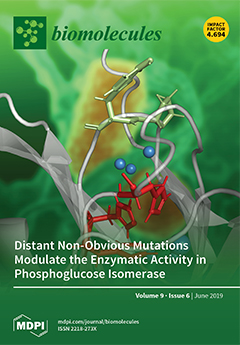Interleukin-7 receptor subunit alpha (
IL7RA) rs6897932 polymorphism IS related to CD4
+ recovery after combination antiretroviral therapy (cART), but no studies so far have analyzed its potential impact in patients with very low CD4
+ T-cells count. We aimed to analyze
[...] Read more.
Interleukin-7 receptor subunit alpha (
IL7RA) rs6897932 polymorphism IS related to CD4
+ recovery after combination antiretroviral therapy (cART), but no studies so far have analyzed its potential impact in patients with very low CD4
+ T-cells count. We aimed to analyze the association between
IL7RA rs6897932 polymorphism and CD4
+ T-cells count restoration in HIV-infected patients starting combination antiretroviral therapy (cART) with CD4
+ T-cells count <200 cells/mm
3. We performed a retrospective study in 411 patients followed for 24 months with a DNA sample available for genotyping. The change in CD4
+ T-cells count during the follow-up was considered as the primary outcome. The rs6897932 polymorphism had a minimum allele frequency (MAF) >20% and was in Hardy–Weinberg equilibrium (
p = 0.550). Of 411 patients, 256 carried the CC genotype, while 155 had the CT/TT genotype. The CT/TT genotype was associated with a higher slope of CD4
+ T-cells recovery (arithmetic mean ratio; AMR = 1.16;
p = 0.016), higher CD4
+ T-cells increase (AMR = 1.19;
p = 0.004), and higher CD4
+ T-cells count at the end of follow-up (AMR = 1.13;
p = 0.006). Besides, rs6897932 CT/TT was related to a higher odds of having a value of CD4
+ T-cells at the end of follow-up ≥500 CD4
+ cells/mm
3 (OR = 2.44;
p = 0.006). After multiple testing correction (Benjamini–Hochberg), only the increase of ≥ 400 CD4
+ cells/mm
3 lost statistical significance (
p = 0.052).
IL7RA rs6897932 CT/TT genotype was related to a better CD4
+ T-cells recovery and it could be used to improve the management of HIV-infected patients starting cART with CD4
+ T-cells count <200 cells/mm
3.
Full article






